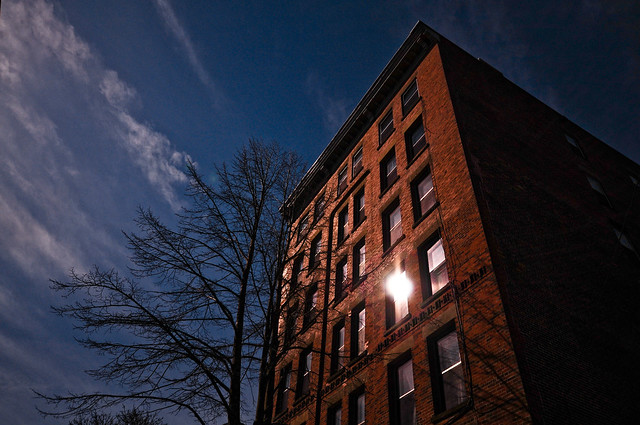SAINT JOHN – Many characteristics affect the look and feel of urban neighbourhoods. Two very important characteristics are building height and density. They can be related, but people often speak as if tall buildings and high density are the same thing. So what’s the difference?
Height is easy: a building is so many stories or so many feet tall. People easily understand how big a 16 storey building is. Density – the number of people or housing units in a given area – pardon the pun, is less concrete.
A common measure of density is units per hectare. Many people can’t picture a hectare, and the number of units in a 16 storey building isn’t always obvious. In addition, unlike height, many factors affect density: how much of the lot is built on, how tall the building is, how big the units in the building are, and how the units are layed out within the building. It’s hard to look at a building and know if it takes up 20% of its lot or 40%.
So with that in mind, here’s a simple question: which of the buildings pictured below is higher density?
If you guessed the high-rise, you’re right, but it’s a trick question. The two buildings have nearly the same density. The low-rise building, in Uptown Saint John, takes up most of its 1400 square metre lot. It has twenty units, on 0.14 hectares, for a density of 142 units/ hectare. The high-rise is in suburban Saint John, and the building’s footprint takes up a very small portion of its 8800 square metre lot. It has 129 units, on 0.88 hectares, for a density of 146 units /hectare.
Don’t worry if you fell for my trick question. A lot of people make the same mistake, including Harvard professor Edward Glaeser, who suggests in this article that the low rise, extreme density Mumbai ward, Dharavi, is in fact low density.
Why is this so important? Density is one of the most important characterisitcs of urban areas. High densities are important in creating vibrant streets, supporting main street commercial areas, and encouraging walking and transit ridership. Building at higher densities allows more people to live near workplaces, shops, parks and school. Increasing density is a common goal for cities that want to revitalize downtown neighbourhoods. Developers also like to build dense developments since they can be very profitable, especially when land prices are high. Unfortunately, density is often confused with height, making it difficult to have a conversation about what type of development is right for different cities and neighbourhoods.
Photos by Sean Gillis and Bill Lapp




4 comments
Just saw this topic and it sparked some conversation on Twitter (#livelifeuptown). How does Uptown SJ stack up density wise to other cities in Atlantic Canada and nationwide?
Great site guys. Keep it up!
Great post – many people don’t realize that mid rise and even low rise hood’s can be quite dense.
Good question Craig. I haven’t done the numbers so this is only a guess, but Uptown Saint John is likely a fair bit denser than core neighbourhoods in other Atlantic cities, except Halifax. My guess is some of Halifax’s core neighbourhoods are a bit denser. Sounds like a good idea for another article – stay tuned!
You can get census tract level data here: http://www12.statcan.ca/census-recensement/2006/dp-pd/prof/92-597/index.cfm?lang=E
It is not perfect because tracts are often a mix of different neighbourhoods. A tract might for example include a residential area and a large park or industrial site, making the overall density number pretty meaningless. It’s also misleading to add up only residents and ignore commercial space.
Another nice way to compare is simply to look at the bird’s eye view at Bing.com/maps.
The gap between Halifax and Saint John is actually quite large. Keep in mind that Halifax is more than 3x larger. My impression of Saint John is that it has some wonderful heritage buildings but not a lot of modern infill — it seems a little “tattered” after a long period of low growth.